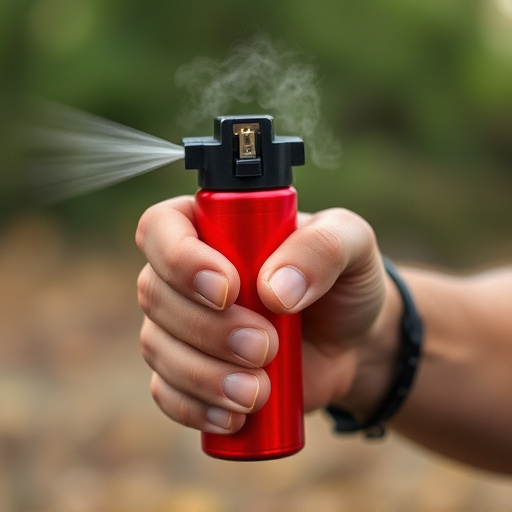Capsaicin, the active ingredient in chili peppers, is an effective deterrent spray that activates pain receptors for temporary incapacitation without permanent harm. Safe use involves recognizing suitable scenarios (self-defense, law enforcement, crowd control), adhering to safety guidelines, and responsible application to protect users and bystanders. When used appropriately, capsaicin sprays offer reliable security measures in dangerous environments, with benefits ranging from personal protection to handling protests or civil disturbances. Always assess surroundings, keep spray secured, target specific body areas, be aware of side effects, and familiarize yourself with local laws regarding its use.
“Discover the power of capsicum, a natural inflammatory agent found in peppers, packaged as deterrent spray. This article explores the science behind capsaicin and its remarkable ability to protect against potential threats. From understanding its active properties to exploring safe use cases, we guide you through the nuances of pepper spray applications. Learn about precautions, considerations, and when to deploy this powerful tool responsibly. Uncover the key to effective self-defense and law enforcement strategies with our comprehensive insights on the safe use of pepper spray.”
- Understanding Capsaicin and Its Inflammatory Properties
- Safe Use Cases and Applications of Pepper Spray
- Precautions and Considerations When Using Pepper Spray
Understanding Capsaicin and Its Inflammatory Properties
Capsaicin, the active compound found in chili peppers, is a powerful inflammatory agent known for its ability to induce a burning sensation. When used in a concentrated form as a deterrent spray, capsaicin exploits the human body’s natural response to pain and heat. It activates pain receptors, leading to an intense inflammatory reaction that can deter potential threats. Understanding this compound’s properties is crucial when considering using pepper spray safely.
Knowing when to employ such a spray involves recognizing specific situations where its effects can be beneficial. For instance, self-defense scenarios often prompt individuals to opt for pepper spray as a non-lethal way to incapacitate an attacker temporarily. However, it’s essential to use it responsibly and follow safety guidelines to avoid any adverse effects on users or bystanders. When used appropriately, capsaicin sprays can serve as a reliable deterrent, providing individuals with a sense of security in potentially dangerous environments.
Safe Use Cases and Applications of Pepper Spray
When to Use Pepper Spray Safely, is a question that often arises due to its potent nature. However, when used responsibly, it can be an effective deterrent in various scenarios. For instance, pepper spray is widely utilized by law enforcement agencies for crowd control and as a non-lethal force tool during protests or civil disturbances, ensuring public safety.
In addition, everyday individuals can benefit from its use for personal protection against potential threats like aggressive animals or muggers. It’s particularly useful in outdoor activities, such as hiking or camping, where unexpected encounters with wildlife may occur. Moreover, pepper spray is a legal self-defense option in many areas, making it a viable choice for individuals concerned about their safety while traveling or navigating unfamiliar environments.
Precautions and Considerations When Using Pepper Spray
When using pepper spray, it’s crucial to understand its nature as a potent inflammatory agent and take necessary precautions for safe application. Always be mindful of your surroundings; ensure you have a clear path and adequate ventilation to prevent accidental inhalation or exposure to sensitive areas like eyes and mucous membranes. Keep the spray out of reach of children and pets, storing it in a secure location.
Before deployment, check local laws and regulations regarding pepper spray use, as some areas have restrictions on its possession and application. It’s essential to target specific body areas, avoiding face or genitalia, as direct contact can cause severe discomfort and potential injury. Be prepared for the effects—it may induce temporary blindness, breathing difficulties, and intense pain—and ensure medical assistance is readily available if needed.
Capsaicin, the active ingredient in pepper spray, serves as a powerful inflammatory agent with deterrents capable of neutralizing potential threats. While its use requires precautions, understanding its properties and safe applications can empower individuals to protect themselves effectively. When used responsibly, pepper spray can be a valuable tool for personal safety in various scenarios, ensuring users remain vigilant and prepared.
